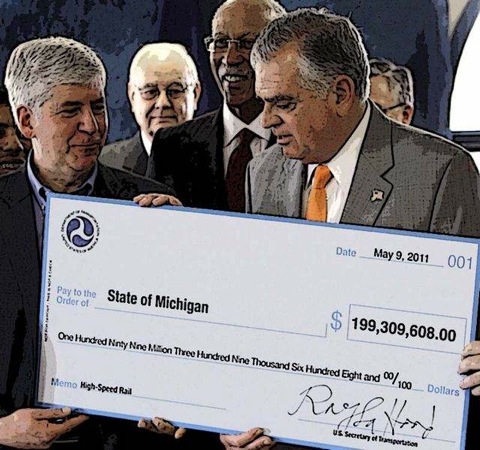The Los Angeles Times says the California high-speed rail project “is a train wreck” that has become “a monument to the ways poor planning, mismanagement and political interference can screw up major public works.” But the newspaper still favors “Obama’s inspiring vision of a nation crisscrossed by bullet trains, providing cleaner, safer and cheaper competition to airlines and reducing reliance on gas-guzzling automobiles” because “the benefits still outweigh the costs.”
Apparently, all it takes is a totally unrealistic vision to persuade people supposedly as sophisticated as the editors of the LA Times. The truth is bullet trains are far more expensive than airlines (75 cents vs. 15 cents a passenger mile); Amtrak’s safety record is far worse than the airlines (1.4 vs. 0.1 passenger fatalities per billion passenger miles); and cleaner depends on the energy source (and powering trains with renewable energy won’t help much if all those trains do is displace some other energy consumer who therefore relies on fossil fuels). As for “reducing reliance on gas-guzzling automobiles,” the state’s own extremely optimistic numbers show that California high-speed rail won’t displace more than 2 or 3 percent of the state’s auto driving; and by the time it is built, autos won’t be guzzling that much gas anyway.








